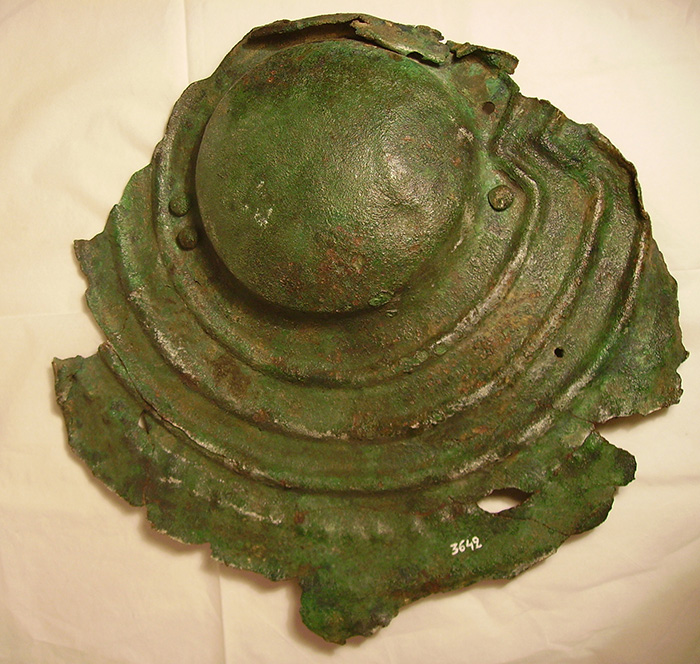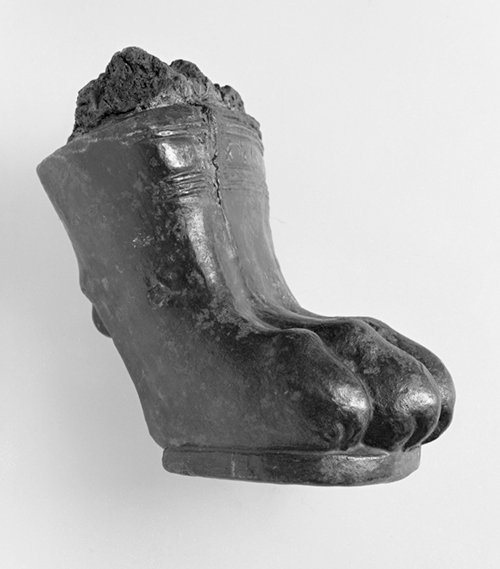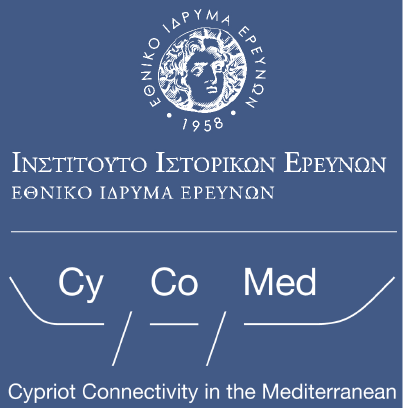Cypriots at Delphi (Archaic- end of classical period)
Hélène Aurigny
Associate professor, Aix Marseille Univ, CNRS, CCJ, Aix-en-Provence, France
The existence of “exotica” in Greek sanctuaries is a well-known phenomenon in the Archaic period. The presence of Cypriot objects at Delphi is attested both by archaeological and literary sources, but the definition of the corpus itself raises many questions. These objects, mainly from the Apollo sanctuary, constitute a significant set with some usual series and some exceptional artefacts. The sanctuary at Delphi received ages-old objects and seems to be well connected to the traffic routes followed by Cypriot objects in the Eastern Mediterranean. Delphi thus offers an interesting viewpoint to observe these complex networks and especially the role played by Crete in the transfer to Greece of craft processes from Cyprus.
The relationships between Cyprus and Delphi that continued through the Roman period can be traced back to the 8th century. The corpus of Cypriot material of the 8th and 7th centuries from Delphi includes bronze vessels, weapons, and a statuette. The island of Cyprus played an essential part in the Early Iron Age connections in the southern Mediterranean and in the diffusion of Near Eastern items in Greek sanctuaries.

Bronze artefacts
Bronze objects from Cypriot origin are rather numerous in Delphi in ancient periods, especially 8th and 7th century BC, maybe earlier. Do these ancient objects illustrate direct and narrow relations between Cyprus and Delphi? Or is it the quality of the Cypriot productions that made them privileged offerings for Apollo? Document review provides some answers.Bronze rod tripods
A small piece of a rod tripod consists of a 7 cm long fragment of the ring, with the start of a rod, decorated with three threads and ropes (Aurigny 2019, n°13). This object has parallels in Cyprus at the end of the Bronze Age. Another bronze fragment of bronze support, decorated with scrolls, may belong to the same period (Aurigny 2019, n°14). Among the most ancient bronze objects from Cyprus, a rod-tripod foot from Cyprus is one of the rare Archaic objects at Delphi to bear an inscription (Aurigny 2019, n°19). The name “Ermaiou” probably indicates the owner of the tripod, who may have had it cast in Cyprus in order to offer it to Apollo (fig. 1).Bronze vases
A hammered bronze cauldron, almost complete, was found in the excavation under the Chariot of the Rhodians (Aurigny 2019, n°121): the handles have a specific shape, even if the lotus flower is broken. About eight bronze handles decorated with lotus flowers are Cypriot productions and ten other are handles inspired by these models (Aurigny 2019, p. 121-123). Among the first, big lotus flowers (fig. 2), cast in bronze and filled with lead, are exceptional in Delphi. The series of bowls with handles decorated with lotus flower is a characteristic production of Cypro-Geometric period, but they appear in more recent contexts in Greek shrines.
Weapons Shields
An impressive bronze shield of Herzsprung-type (fig. 3) has been found very close to the altar of Apollo, under the Sacred Way, together with a hammered griffin protome (Lerat 1980, p. 93-103; Aurigny 2017, p. 231). Delphi is the only site from mainland Greece where a shield of this type was found, apart from Kalapodi; there are four other fragments of Herzsprung shields in Delphi. Their most probable origin is Cyprus. The island of Cyprus played an essential part in the Early Iron Age connections in the southern Mediterranean and in the diffusion of Near Eastern items into Greek sanctuaries. Many other bronze fragments come from shields decorated with ‘cypro-cretan’ motifs (Aurigny 2017); they suggest that the Cretans were inspired by Cypriot productions or that they imported them to offer them to the gods. Masterpieces of Cretan toreutics, like tripod-stands or bronze shields, are characteristic of the relationships with Near Eastern models, more precisely here Cypriot motifs; their exotic aspect emphasized their prestige value. Near Eastern metalwork developed for a long time in Crete, and close relations between Cyprus and Crete are obvious in the archaeological record.
Helmet
A mobile cheek-piece from a helmet, found under the Chariot of the Rhodians, looks like a Cypriot artefact. It is made of a hammered bronze sheet and two large oval cut-outs are made for the mouth and eyes. According to the excavation context, it can be dated to the 7th century; parallels of the same period are known in Tamassos.
Statuette
Only one bronze statuette has been identified with a Cypriot artefact: a headless bull statuette has an elongated body, narrow thighs and high legs (Aurigny 2017, p. 227). The treatment of the tail is reminiscent of a Cypriot document, maybe of the 7th c., that is to say one of the last Cypriot bronze votives in Delphi.
Donors and votives in literary sources
The rod tripod offered by Ermaios shows the role of the Cypriot ‘élite’ in the dedications for Apollo at Delphi. This tripod announces the evergetism of the classical rulers at Delos or Delphi. This echoes some royal Cypriot dedications in Delphi, especially an incense-burner (thymiaterion) offered by King Evelthon of Salamis (Herodotus 4.162). According to Atheneus (2, 48b), Helicon of Salamis, son of Akesas, had dedicated the cloth he had made with his hands to Delphi, following the inspiration of Athena. Still in the 4th century, Nicocreon, last king of Salamis, had dedicated to Delphi, in memory of a marvelous hunt, a stag with four antlers, probably still a work of bronze, in the tradition of the great archaic workshops. These dedications of kings and artists continued until the Roman epoch (Pouilloux 1976, p. 159). These are individuals who want to honor the Apollo of Delphi with a prize votive that shows their social status. Here we have a phenomenon comparable to what is happening in the Greek cities with the forms of social recognition implemented by their "elites".


The mention of the Treasury of the Corinthians, where the dedication of Evelthon was kept, is not insignificant, as it also contained many precious royal offerings which had been placed there sometimes after degradation. This is the case of the throne of Midas, golden craters, the golden lion or silver jars offered by Croesus and stored in the Treasury after the fire in 548 BC (Herodotus I, 14, 50-51). We may wonder if this treasury would have served as a storage place for rich foreign offerings in the sanctuary of Apollo. Its location at the heart of the sanctuary is suitable for a showcase of the precious gifts of the oriental kings. Regardless, the Cypriot and Oriental offerings had been carefully preserved by the Delphians since Archaic times.
Bibliography
Aurigny, H. 2017. “De Chypre à Delphes : objets et réseaux en Méditerranée orientale pendant le haut-archaïsme.” In Chypre et les grandes îles de la Méditerranée, un nouvel espace d'échanges, de la fin du IIe millénaire av. J.-C. à l'époque hellénistique, edited by S. Fourrier, J.-C. Sourisseau & H. Tréziny, 221-234. Paris: De Boccard.
Aurigny, H. 2019. Bronzes du haut-archaïsme. Trépieds, chaudrons et vaisselle de bronze, Fouilles de Delphes V. Athènes: EFA.
Lerat, L. 1980. “Trois boucliers archaïques de Delphes”. BCH 104:93-114.
Partida, E. 1992. «Κυπριακή παρουσία στον αρχαιολογικό χώρο των Δελφών». Φωκικά Χρονικά Δ:126-138.
Pouilloux, J. 1976. “Chypriotes à Delphes.” RDAC:158-165.